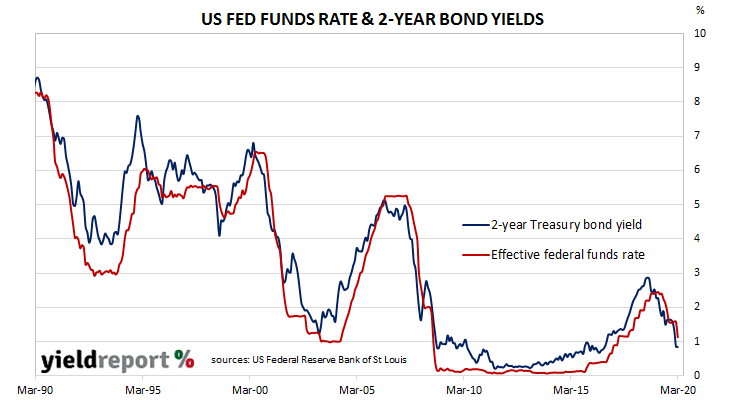The US was at the heart of what became known as the “Global Financial Crisis” in 2008/2009. As the US economy fell into a deep recession, the Federal Reserve rapidly cut its interbank overnight lending target range to 0%-0.25%. It left this target range close to zero for over seven years until it began to “normalise” interest rates through 2016, 2017 and 2018. However, in early-2019, it was spooked by prospects of a slowing global economy, falling bonds yields and the US-China trade dispute. Shortly thereafter, the Fed began a series of rate cuts, the last of which occurred in October 2019. Up until late last week, the next rate cut was expected in mid-2020.
In a move which would have been a surprise to many up until last Friday, the Federal Reserve cut its overnight interest rate target by 50bps at a meeting of its monetary policy committee. The Fed’s interest rate setting committee, known as the Federal Open Markets Committee (FOMC), reduced its federal funds target range from 1.50%-1.75% to 1.00%-1.25%. The decision came on a day between scheduled meetings, something the FOMC has done in the past only in times of distress, thus prompting the “emergency” description from observers.
The unanimous decision was made despite the committee describing the fundamentals of the US economy as “strong”. The committee’s official statement said “the coronavirus poses evolving risks to economic activity” and, as such, a rate cut would support the Fed’s goals. The statement also stated the Fed will be “closely monitoring developments.”

